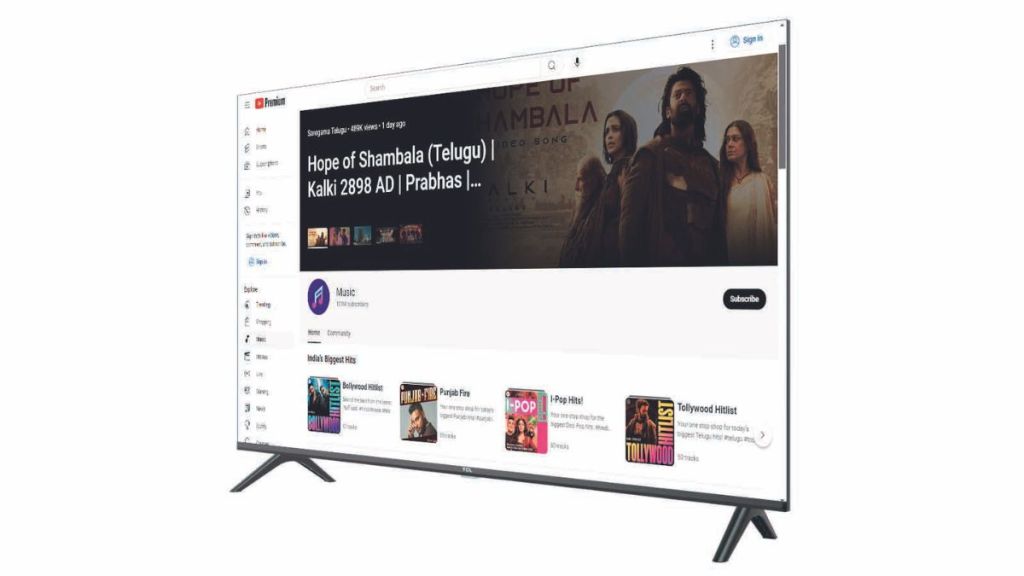Following a subscriber surge to the platform — it surpassed the magic figure of 100 million earlier this year — YouTube is doubling down on its Premium service. Last week, it introduced a raft of new features designed to keep viewers hooked to ad-free content, mirroring the offerings of its rivals in the over-the-top (OTT) and music streaming wars.
But marketers know how difficult it is to convert free trial users to pay. So if the Average Joe perceives you as a “free” offering and then you try to get them to buy your product, it’s important to make sure your free-to-paid conversion strategy is well-tuned. YouTube is going through that exact same dilemma.
The platform, which sells its subscription for YouTube Music and Premium together for plans starting `79 a month for students, `129 a month for individuals, `189 a month for families, or `1,299 a year, rolled out experimental features such as “Jump Ahead”, which allows users to skip ahead to relevant parts of the video using AI and viewership data. It has also introduced a picture-in-picture feature for YouTube Shorts in certain parts of the world, and allowed for “Smart Downloads” that would enable a viewer to see them even when she is offline. It has introduced a Conversational AI and is redesigning its watch page.
“Beyond features, we know what truly makes viewers and listeners keep choosing YouTube — it’s the incredible content from our creators and artistes. YouTube Premium helps maintain a thriving creator and artiste community, providing them with an additional source of revenue from subscriptions,” says Adam Smith, vice-president, product management, YouTube.
The platform currently has over 637 million users from India, which is expected to rise to 859 million by 2029, according to Statista. But will the paid version elicit similar enthusiasm from the price-conscious Indian? Karan Taurani, senior vice-president & research analyst, Elara Capital, estimates that the paid version of the platform has about 1.5-2 million subscribers in India, a number difficult to scale up. “Globally, the aggregator model has kicked off because of high connected TV penetration, as people are not as interested in watching ads on their phones. I don’t foresee Youtube Premium further picking up unless we see CTVs pick up as well,” he says.
And that future is not too far away. Connected TV sets reached 35 million in India in 2023, as per EY’s M&E sector 2024 report. The report also said, the segment will likely pick up post 2026, once wired broadband crosses 60 million to 70 million homes and 5G connections scale significantly.
So far so good, but price sensitivity remains a major hurdle — a problem encountered by streamers such as Netflix. So is there much headroom for growth?
Nisha Sampath, managing partner, Bright Angles Consulting, says the brand has not fully leveraged the opportunity to convert free users to paid users. “Spotify and Apple Music think and act like paid services, but YouTube still feels like a free service which is now trying to extract a fee for ad-free viewing. There is a difference in the mindset of the consuming audience.”
So, what can the platform do to attract users? Sampath says that currently, apart from downloads and ad-free viewing, it’s not clear what the value addition is for a subscriber. Even a free user can access YouTube’s vast catalogue, which is the real USP of the streaming service. A stronger suite of benefits for subscribers might come in handy. For example, bundling access to exclusive content from creators (for which one currently pays separately) or offering HD quality video and lossless audio on YouTube Music.
That apart, the company can increase its focus on localised content, exclusive regional offerings, and affordable pricing plans, says Ambika Sharma, founder & MD, Pulp Strategy. “Bundling with other popular services or telecom plans can also enhance appeal,” she adds. Promoting the educational and entertainment value of YouTube Originals and Music can help capture a larger audience, she says.
Delivering highly personalised content recommendations based on individual viewing habits and preferences harnessing the power of AI is another option. Yasin Hamidani, director, Media Care Brand Solutions points out that the platform will do well to reduce buffering through AI-driven network management and also curate and promote region-specific content, catering to diverse linguistic and cultural preferences.


